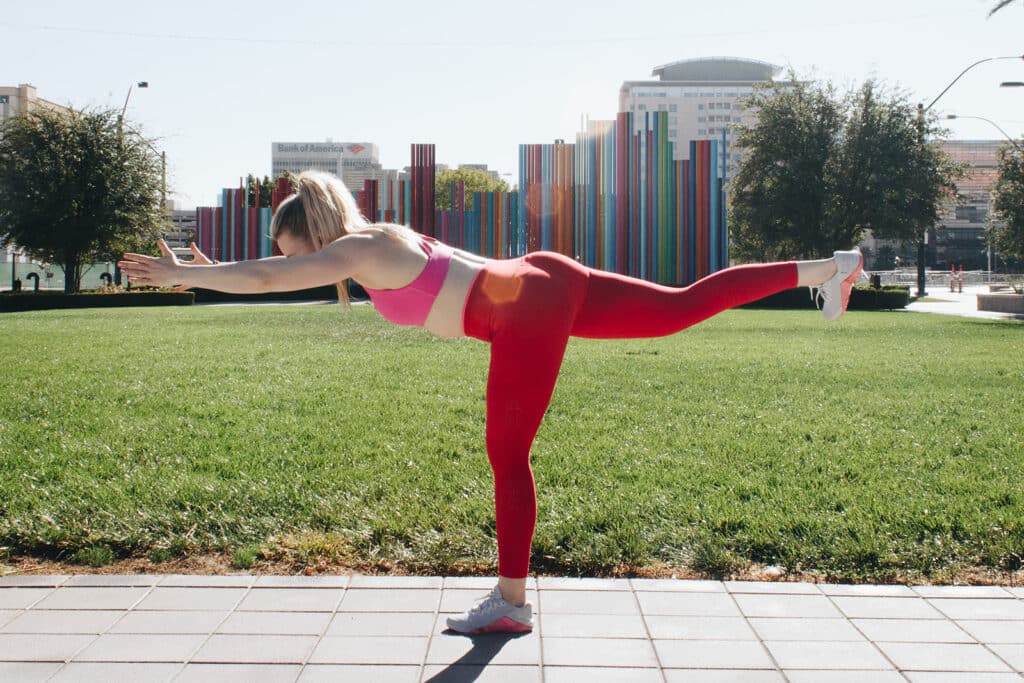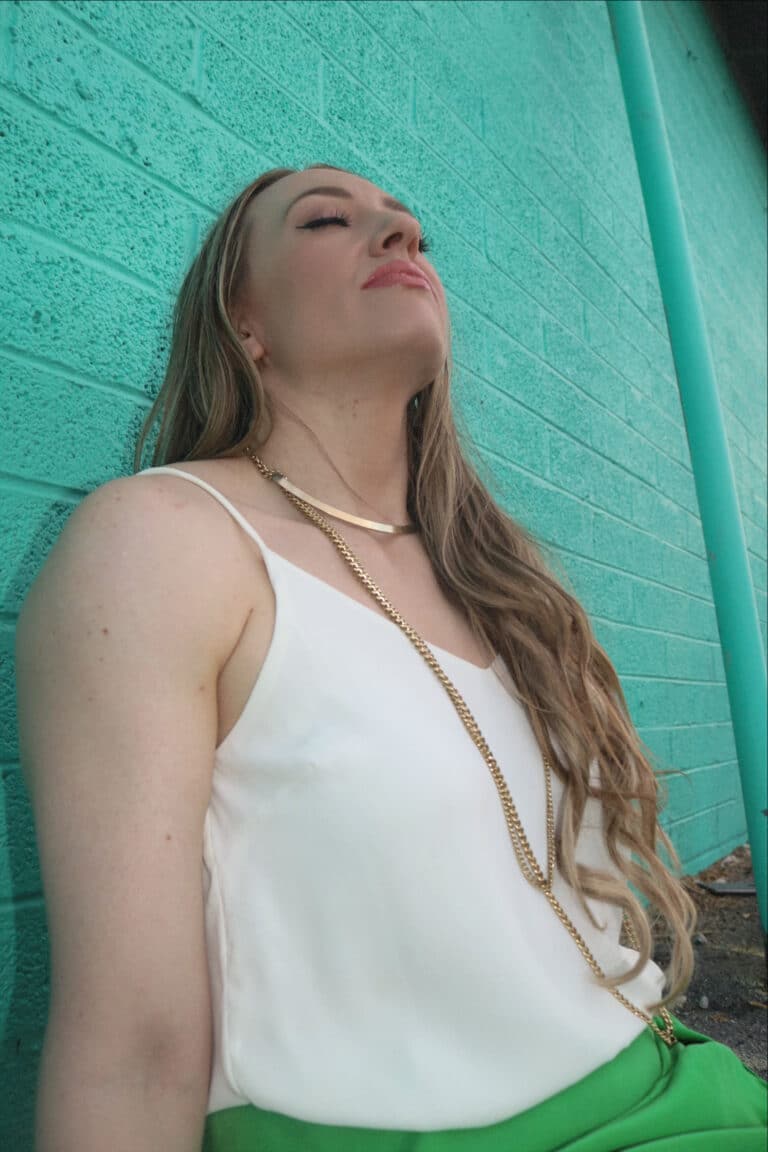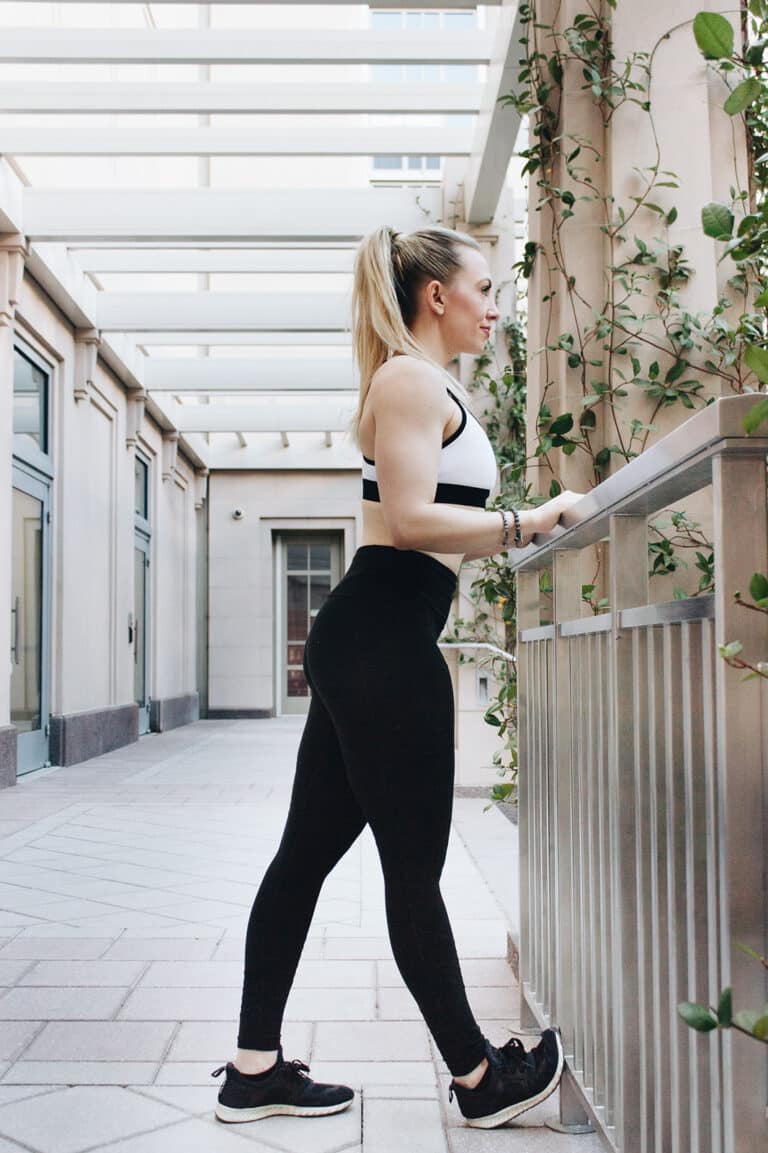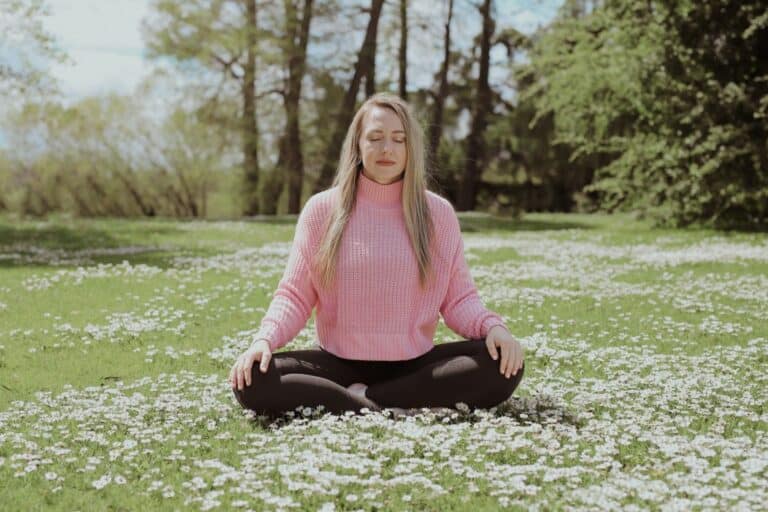How to Choose a Yoga Class

You probably already know what yoga is, but you might not know how to choose a yoga class.
Yoga is so much more than what you see on social media–skinny white women in sports bras who are super flexible, balancing while twisted like a pretzel. But yoga is accessible for all levels and beneficial for everyone! Yoga is a great form of exercise that helps relieve stress because it’s a form of mind-body exercise. Your mind-body connection influences how you feel and think, both physically and mentally, and your overall wellness will benefit from yoga. The mind-body connection helps you deal with stress and anxiety, and it regulates your emotions and life. All types of yoga classes are going to help flexibility and help you to relax by activating the parasympathetic nervous system.
This means you need to be more specific on asking yourself what you want to get out of your yoga class. Are you looking to barely move, meditate, and relax? Then a yin or restorative class is perfect. If you want to get your heart rate up and move at a quicker pace, vinyasa is going to be more for you. How to choose a yoga class greatly depends on what you want to get out of it.
Not sure what yoga class to take?
Ask the instructor or studio what they recommend! Trying something new can be intimidating, but every studio is different and getting a recommendation from the studio is a great way to start.
Here is a breakdown of some common yoga class type/styles that can help you:
- Vinyasa- a faster paced yoga class that is connected through sun salutations and connects the breath to each movement.
- Yin or Restorative – these styles are different to a more advanced yogi but 90% of yin and restorative classes use the name interchangeably. These classes are usually very relaxing and meditative. They consist of longer holds of postures and most of the poses are done lying on the mat.
- Hatha- yoga that is just taught as postures. Meaning, this class doesn’t flow or have rhythm. Think of a list of poses and you just go through them.
- Gentle or Slow Flow- yoga that moves slow and mindfully.
- Iyengar- yoga that’s all about alignment and uses many props.
- Ashtanga-yoga that’s a specific sequence and succession. Ashtanga yoga is based on the 8 limbs of yoga.
Your fitness level and yoga experience determine the starting point for how to choose a yoga class.
Some classes have clear labels like 1-2 or 3-4, beginner, intermediate, etc. Other classes don’t, and that is where it gets tricky. If you have never worked out before and don’t have a lot of body awareness, you’re probably going to want to start with a class that is slower paced. If you are physically fit and used to following a fitness instructor, you may do ok in a faster class. If you are just wanting to stretch and move mindfully, look for words like slow flow and gentle.
If you are physically active but haven’t done mind-body exercises before, yoga may be more challenging than you might think, regardless of how good of physical shape you are in. In yoga, one of the goals is being able to listen to the cues and the instructor without watching the instructor. But this is very different from other types of fitness that rely heavily on watching someone demonstrating. Yoga teaches your body to be more intuitive without having to rely upon watching others. Most yoga classes provide some sort of visual reference, the instructor or a regular student in the front row, but listening to an instructor increases your body awareness and improves your mind-body connection. This also makes yoga a great complementary workout to higher intensity exercises.
A lot of new yoga students can be embarrassed or intimidated thinking everyone is watching them, but really everyone is just worried about themselves.
Choosing a yoga class has a lot to do with your yoga instructor. Different yoga instructors have different styles. To get an idea on the type of instructor you jive with, try to find their bio or look them up on social media. Some instructors use a lot of Sanskrit, an ancient Hindu language. If you are new and the instructor only uses Sanskrit, you are probably going to want to find one that at least uses some English or names the poses in both English and Sanskrit until you learn what the Sanskrit names of the poses mean.

Yoga is a mindful and spiritual practice. There are instructors who incorporate a lot of yoga philosophy into their classes and those who do not. You’ll find that some instructors speak a lot about chakras and may seem woo woo, and some who are very straightforward and focus on the physical aspects of the practice and the breath. You’ll get a sense of this style based on the instructor’s history and bio, but you won’t truly know until you try classes. There are also some instructors that speak through the entire class and some that allow more space and silence. Everyone has a different taste. Because of this, I recommend trying many different instructors until you find one that fits. This may seem overwhelming at first, but I promise when you find an instructor you jive with, it will be worth it!
Finding a class and style that appeals to you might seem like a lot of trial and error, so look for a workshop or book a private session!
Getting a step-by-step tutorial of the most common poses will help you in a class. In a class that is not a beginner class, it is going to be more challenging to learn the set up of all the poses, which is why you don’t want to dive into the deep end and start with an intermediate class. If you find a workshop or do a private lesson you will be able to learn the pose and get the most out of it before moving on to the next pose.
When you are new to yoga you are just trying to keep up and may lose sight of these small details. Even if you choose a class that may seem “too easy,” you will be able to get something out of it. A seasoned yoga practitioner can benefit from every pose, no matter how seemingly basic, honing in on each body part and focusing on the breath and the pose. For example, even in mountain pose, when you appear to just be standing there, there are many things going on in the body. The core must be engaged, the neck long, the shoulders pulled back, the arm bones rotated out. The inner thighs should be active with the thighs engaged and both feet should be pressing down into the mat. And most importantly, you should be breathing.
How to choose a yoga class can be a lot of trial and error.
If you have any questions or would like me to guide you, I’m happy to help. Leave me a comment below or shoot me an email at hello@spritzsunday.com If you want to learn more about mind-body exercises, head to 10 Benefits of Pilates.






